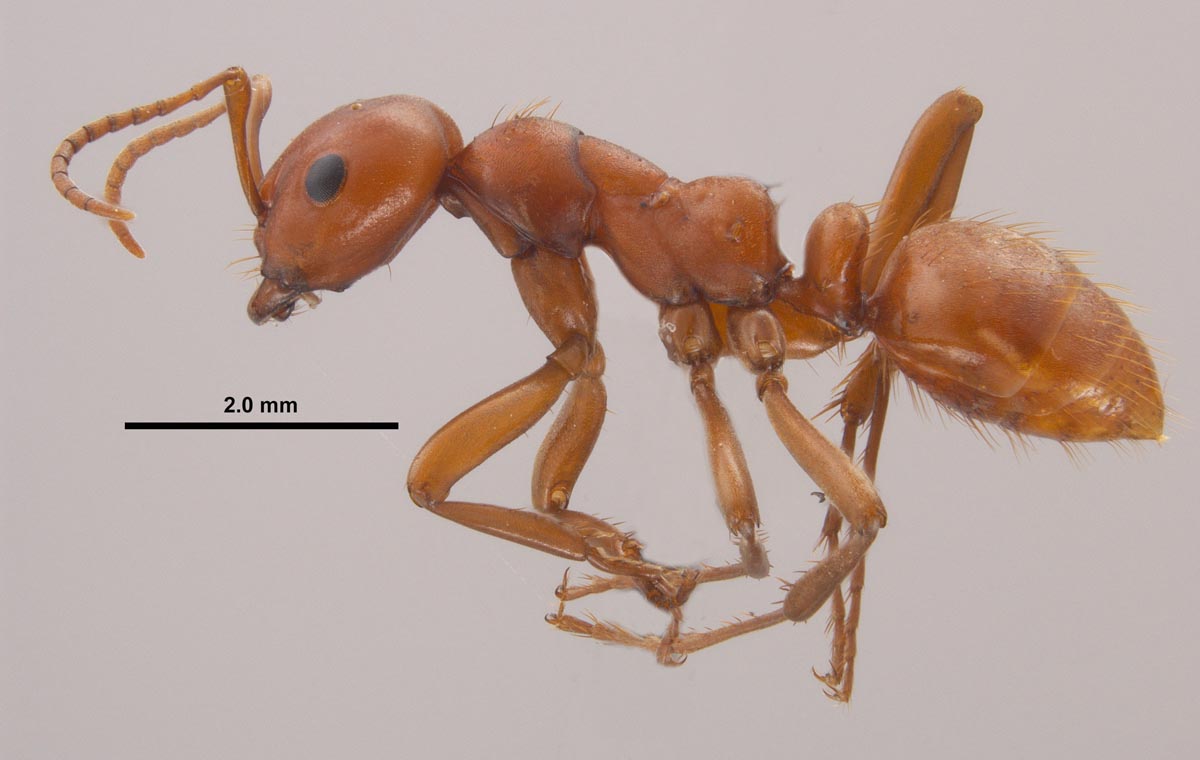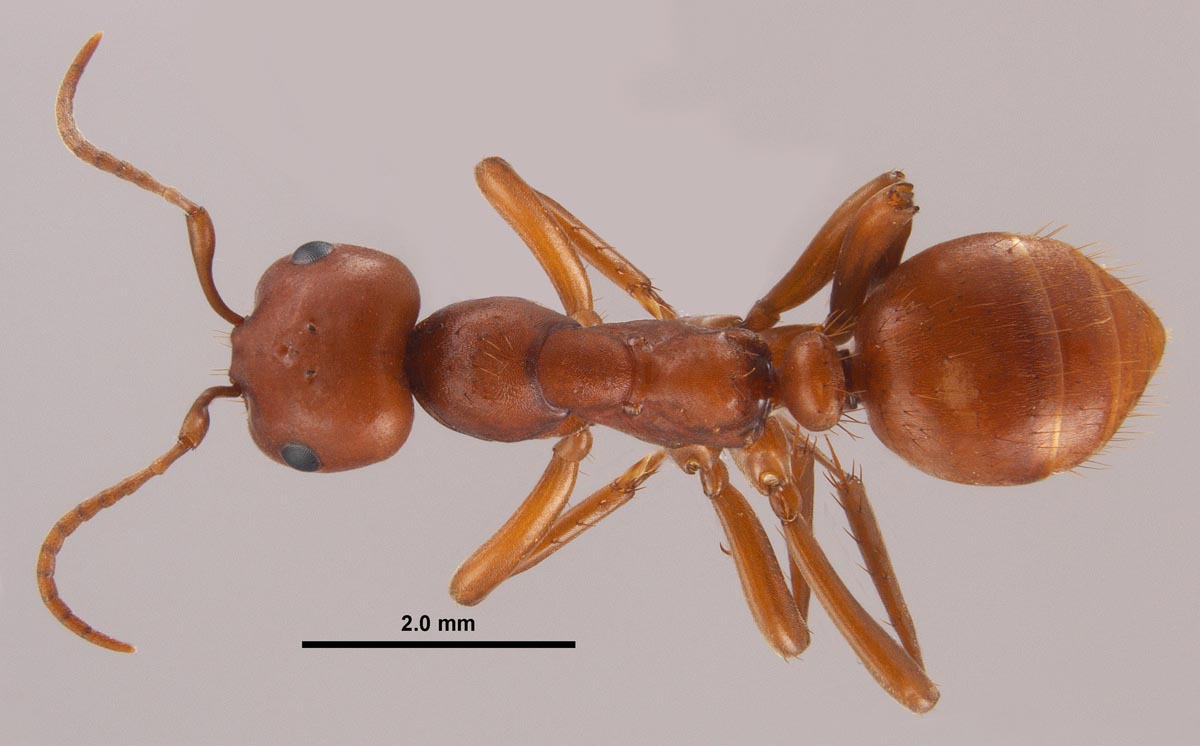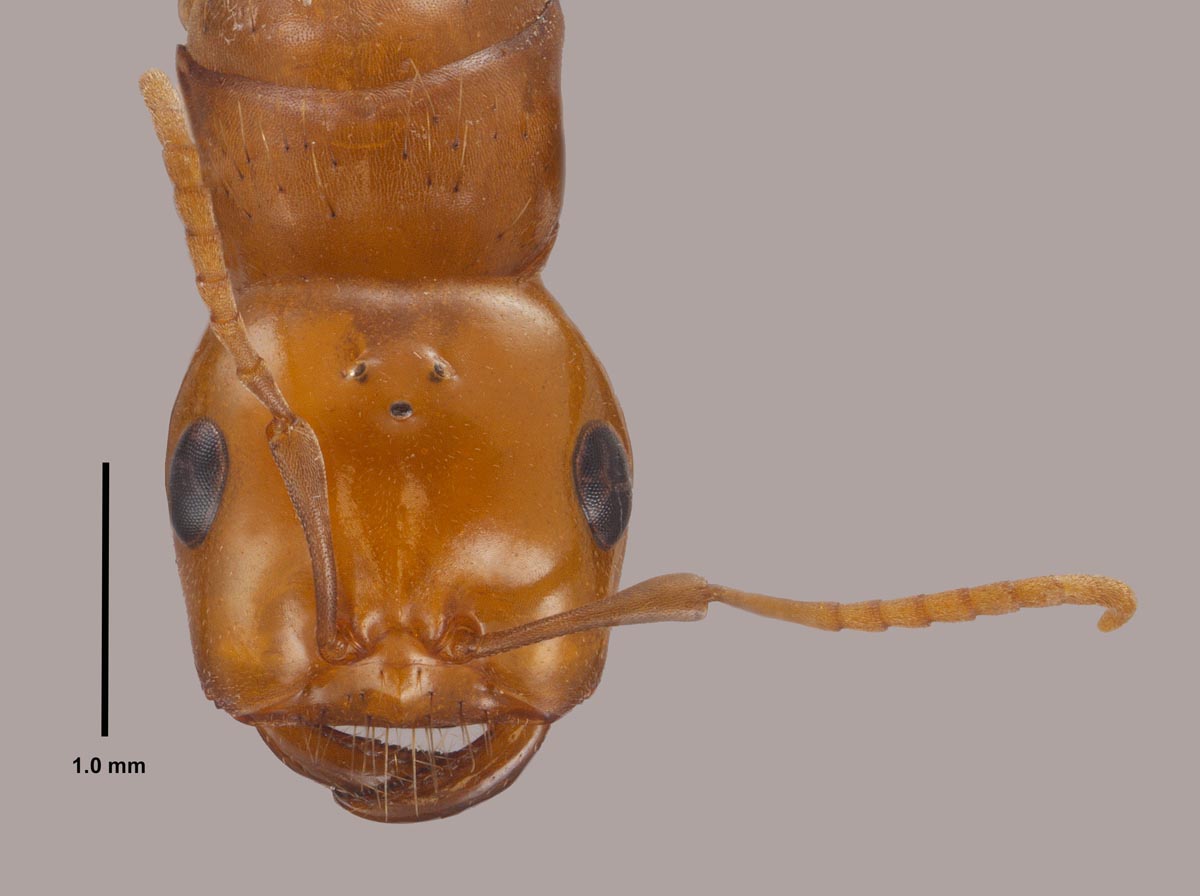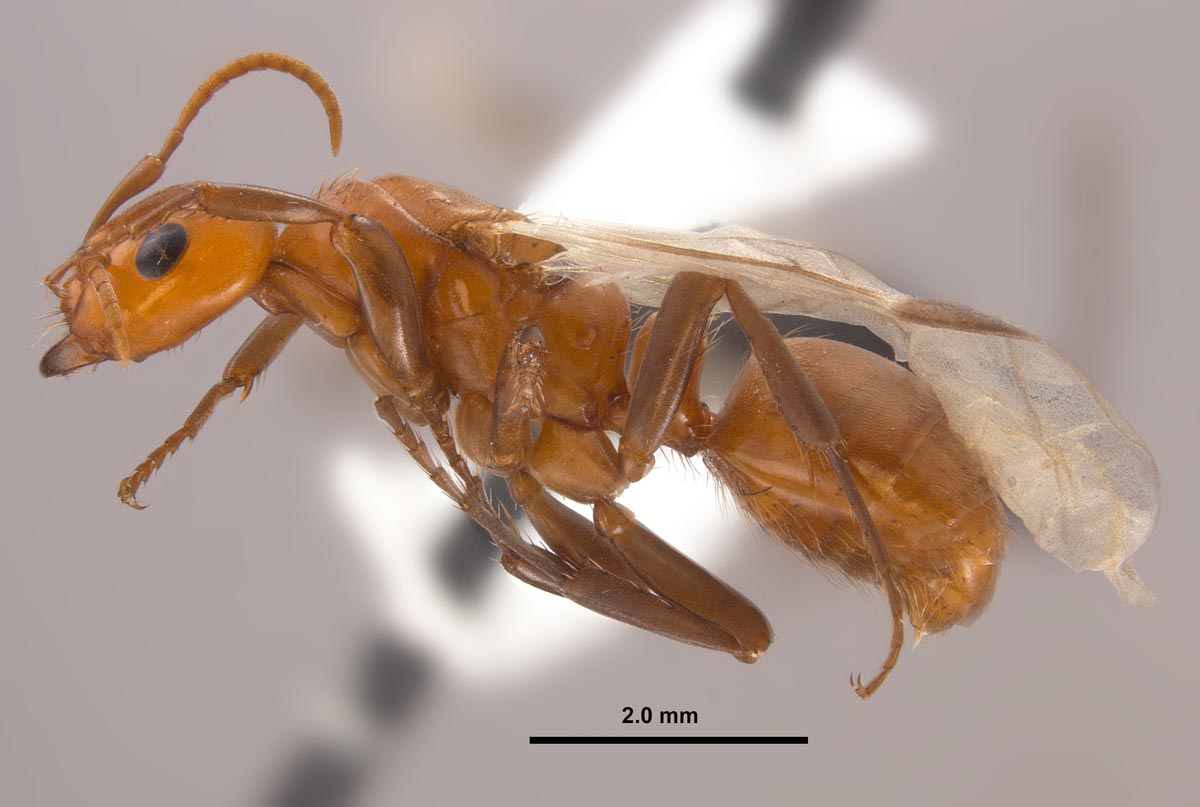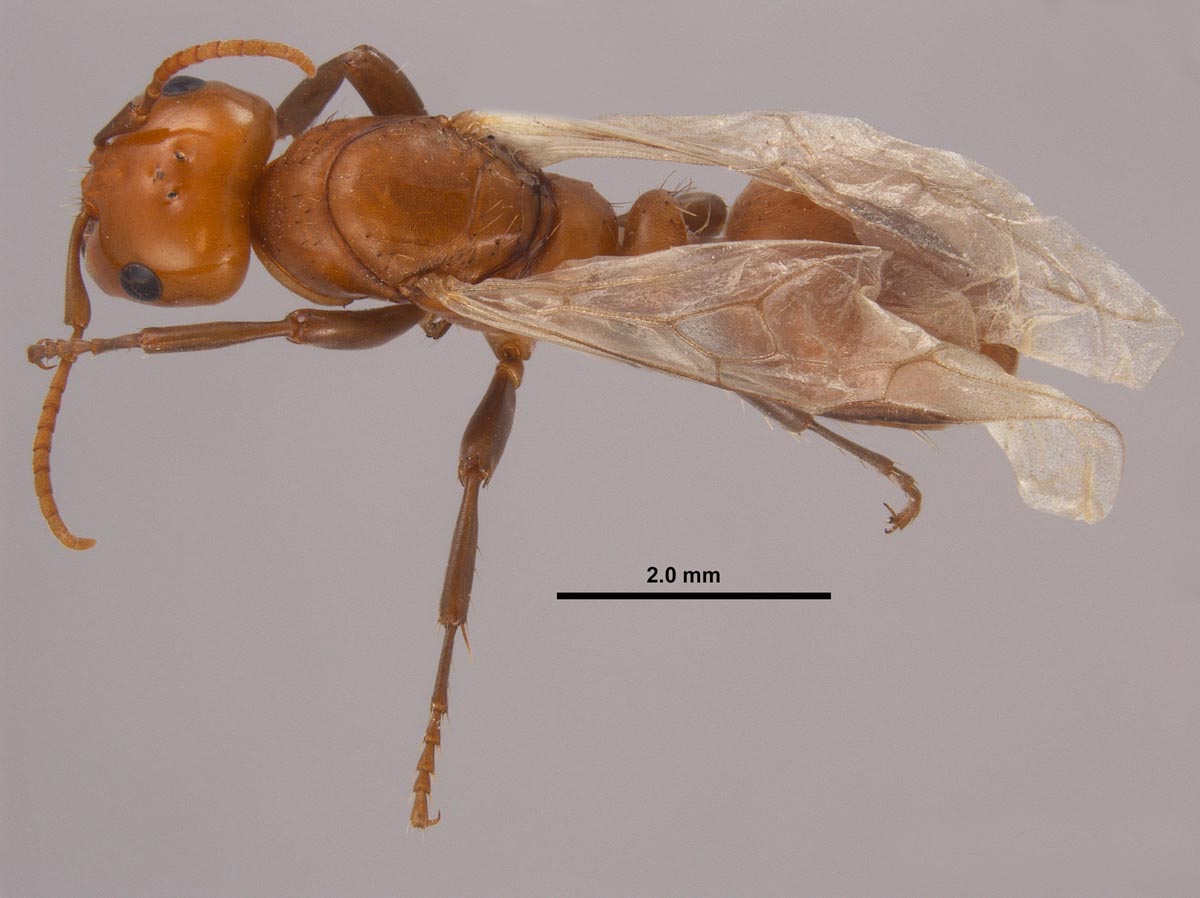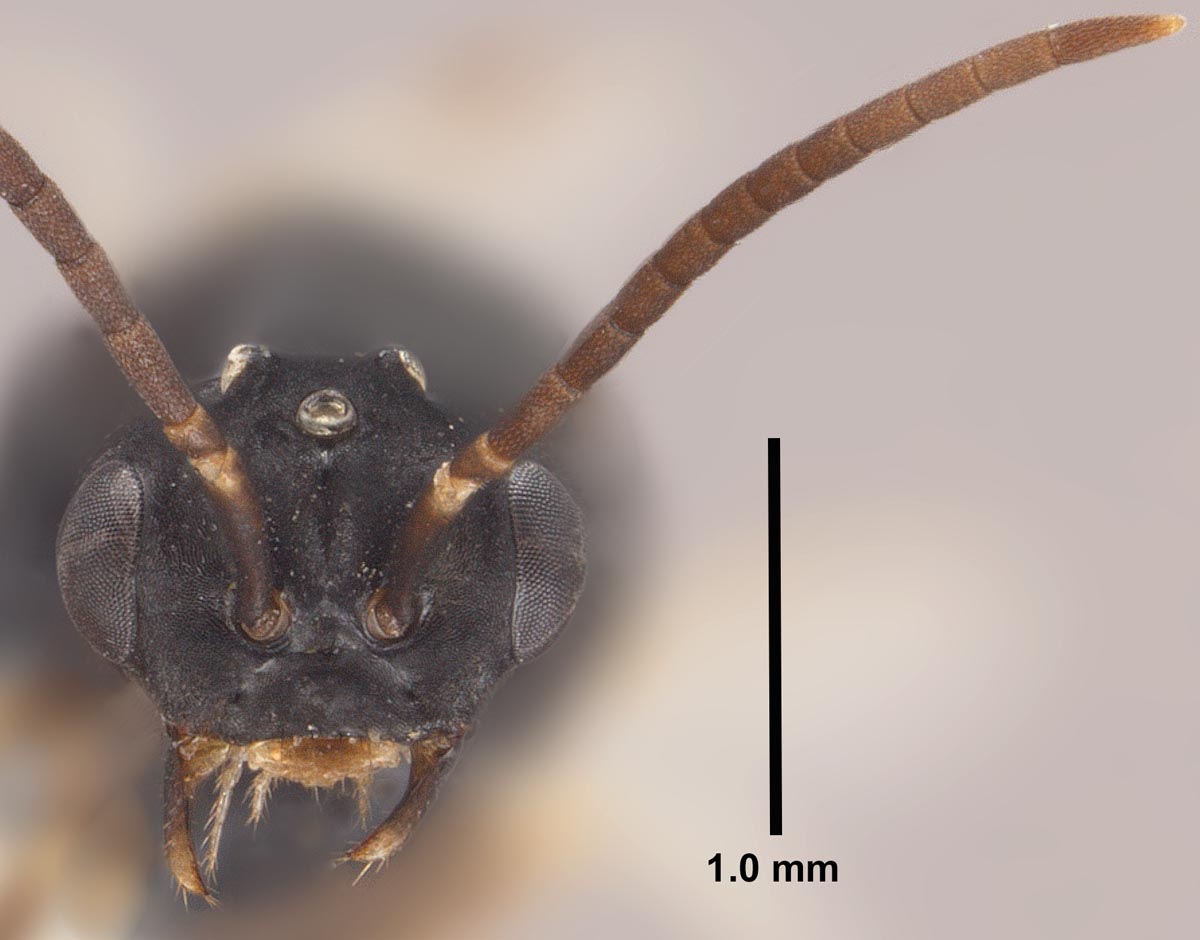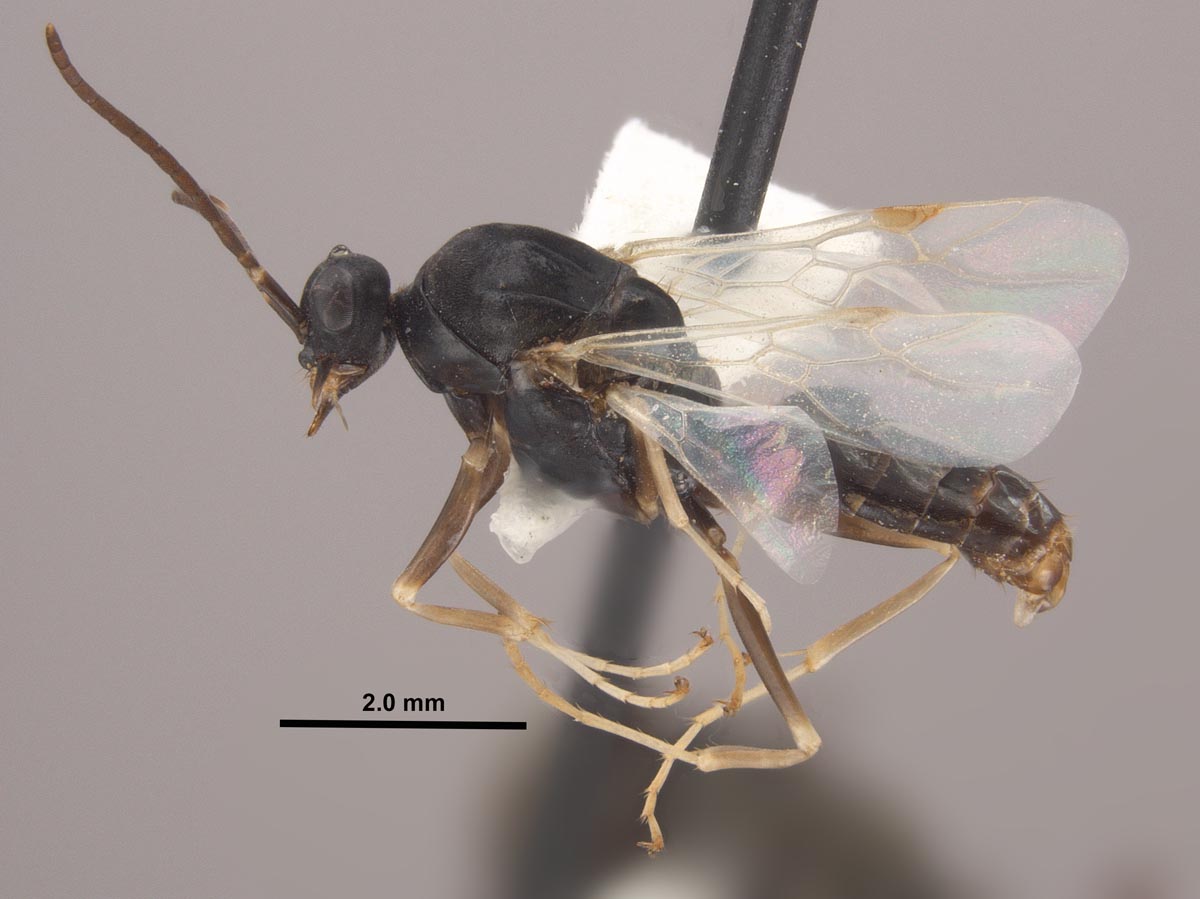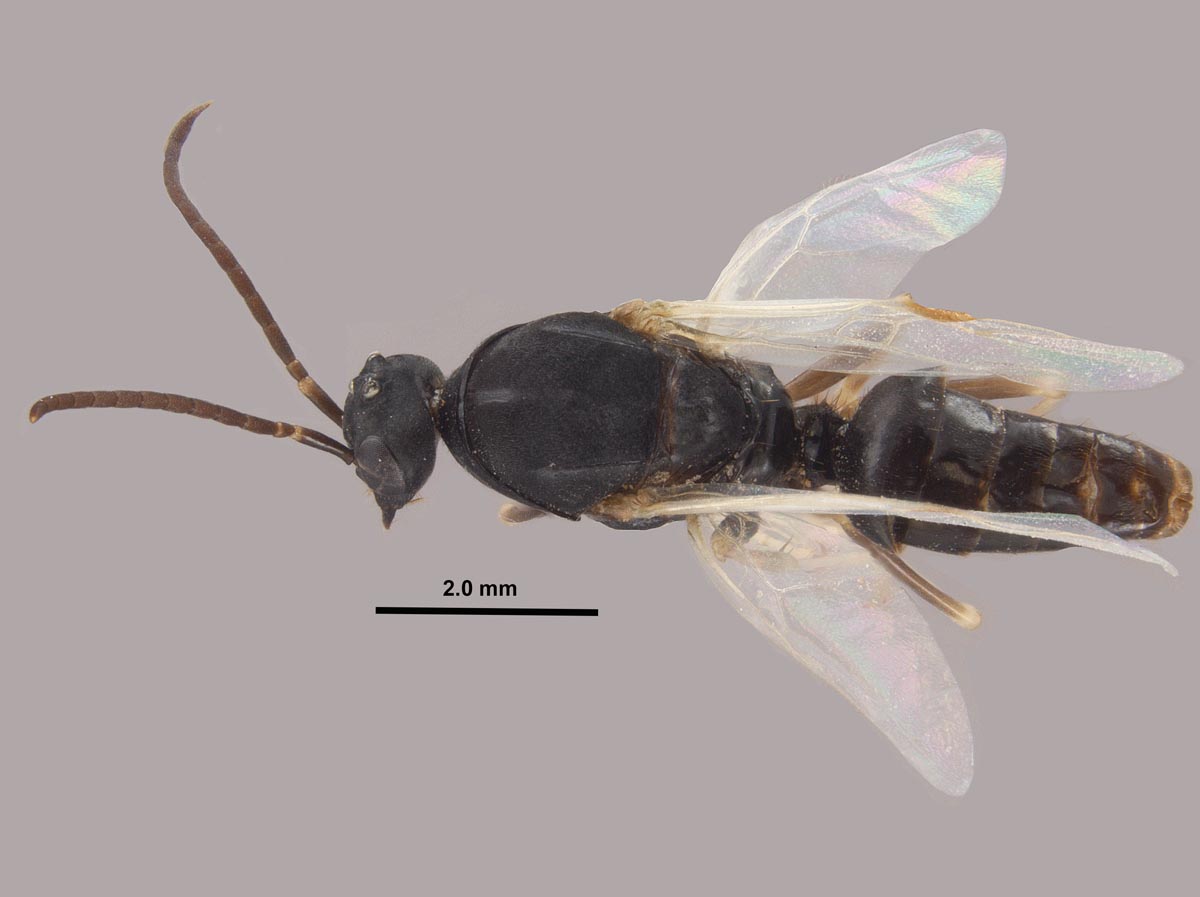Subfamily FORMICINAE by Joe A. MacGown, uploaded 21 July 2009, updated 23 July 2014 |
||
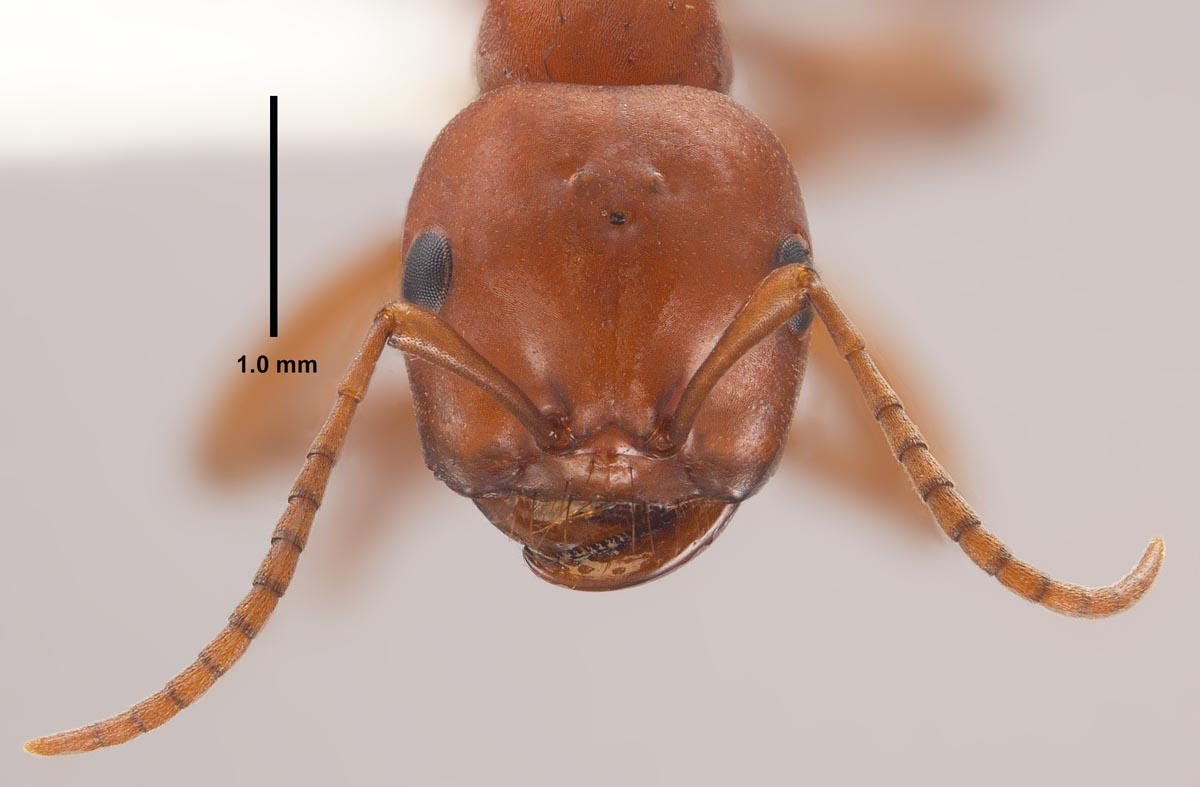 |
||
Polyergus mexicanus, full face view of a worker (photo by James Lewis and Joe MacGown) |
Polyergus mexicanus, profile view of a worker (photo by James Lewis and Joe MacGown) |
Polyergus mexicanus, dorsal view of a worker (photo by James Lewis and Joe MacGown) |
Polyergus mexicanus, full face view of a queen (photo by James Lewis and Joe MacGown) |
Polyergus mexicanus, profile view of a queen (photo by James Lewis and Joe MacGown) |
Polyergus mexicanus, dorsal view of a queen (photo by James Lewis and Joe MacGown) |
Polyergus mexicanus, full face view of a male (photo by James Lewis and Joe MacGown) |
Polyergus mexicanus, profile view of a male (photo by James Lewis and Joe MacGown) |
Polyergus mexicanus, dorsal view of a male (photo by James Lewis and Joe MacGown) |
Overview Polyergus species are obligatory or true slave-making ants. In nest founding, the female enters a nest of the host species, eventually kills the rightful queen, and uses the host workers to tend her brood. Polyergus colonies conduct slave raids on nests of various species of Formica, and workers of the host are taken and used by the Polyergus colony to feed and rear the brood and excavate the nest. Polyergus workers are incapable of surviving without slaves. In laboratory colonies, a colony without slaves will starve to death even when plentiful food is available. (Hedlund, 2007; King and Trager, 2007). Polyergus mexicanus is a reddish-brown species that is widely distributed in the western US and east to Indiana and Arkansas,ranging south into Durango and Chihuahua Mexico and north to Alberta, Canada. This common species has a fairly wide variety of hosts in the F. fusca and neogagates groups. Taxonomic History (from Trager 2013, Bolton 2014) Identification This species can be separated from other Polyergus species in the southeastern United States by its shorter antennal scapes, which are shorter than the interocular distance, clubbed appearance of antennal scape, and the more densely pubescent gaster. Biology and Economic Importance Trager (2013) reported that species has a wide variety of hosts in the F. fusca and neogagates groups. In the southwestern USA and northern Mexico, the host is
usually F. cf. occulta. Hosts from other regions include F. argentea, F. podzolica, F. subsericea, F. fusca (marcida & subaenescens), F. accreta, F. microphthalma, true F. occulta, F. neoclara, F. pacifica, F. neorufibarbis, F. hewitti, F. neogagates, F. manni, and F. vinculans. In Arkansas, we observed this species raiding F. subsericea at approximately 5:00 PM from 5-7 August 2008. Alates of this specie have been collected in the summer. This species poses little in the way of economic importance, as is rarely encountered. However, if provoked or handled worker can inflict a somewhat painful bite. Distribution (from Trager 2013) CANADA: Alberta, British Columbia, Manitoba. MEXICO: Chihuahua, Durango. USA: Arizona, California, Colorado, Idaho, Iowa, Minnesota, Missouri, Montana, Nevada, New Mexico, North Dakota, South Dakota, Utah, Washington, and Wyoming. The MEM has also collected this species in Conway County, Arkansas. Literature Cited Hedlund, K. S. 2007. The Ants: North America Catalog: Genus Polyergus. http://www.cs.unc.edu/~hedlund/playpen/dev/ants/catalog/ (accessed 6 June 2008). King, J. R. and J. C. Trager. 2007. Natural history of the slave making ant, Polyergus lucidus, sensu lato in northern Florida and its three Formica pallidefulva group hosts. 14 pp. Journal of Insect Science 7: 42, available online: insectscience.org/7.42 Smith, D. R. 1979. In Catalog of Hymenoptera in America north of Mexico. Smithsonian Institution Press, Washington D. C. Vol. 2, pp. 1323-1427. Smith, M. R. 1947. A Study of Polyergus in the United States, based on the workers (Hymenoptera: Formicidae). The American Midland Naturalist 38: 150-161. Trager, J. C. 2013. Global revision of the dulotic ant genus Polyergus (Hymenoptera: Formicidae, Formicinae). Zootaxa 3722 (4): 501–548. Links |
||


